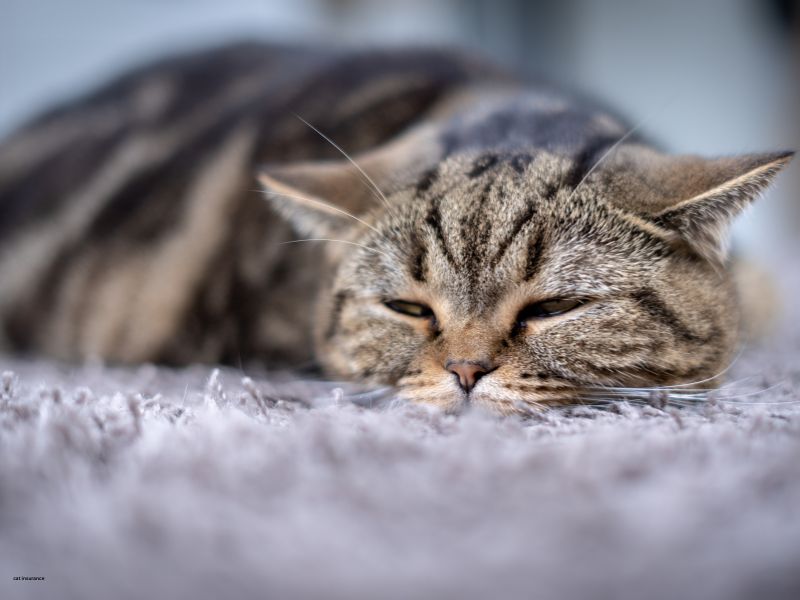This guide covers everything you need to know about cat insurance, from coverage options and costs to how to choose the best policy for your feline companion.
Do I Need Cat Insurance?
Cats, like any pets, can be unpredictable. They may develop illnesses or suffer accidents, both of which can result in significant vet bills. For instance, treating a common knee problem like patella luxation can cost between £2,000 and £4,000, while managing a condition like diabetes typically runs around £1,300.
Cat insurance provides financial protection, helping cover the cost of treatment for injuries, illnesses, or other health conditions. It’s especially valuable if your cat develops a recurring or chronic condition, as specialized policies can help manage long-term care expenses.
How Much Does Cat Insurance Cost?
The cost of cat insurance varies depending on factors like your cat’s:

-
Breed: Purebred cats often cost more to insure due to their predisposition to certain health issues.
-
Age: Older cats are generally more expensive to insure as they are more likely to require medical attention.
-
Health History: Cats with pre-existing conditions might need specialized policies.
-
Your Location: If you live in a city, premiums may be higher due to increased risks and higher vet fees.
Average Monthly Premiums by Breed:
-
Domestic Shorthair: £191.95
-
British Tipped Shorthair: £199.42
-
Shorthair Tabby: £206.56
-
Persian Bi-Colour: £211.12
-
Angora: £448.09
Insurance costs are typically higher in urban areas due to a greater likelihood of accidents and higher veterinary costs.
Types of Cat Insurance
Choosing the right cat insurance policy depends on your budget and your pet’s needs. Here are the main types:
Accident-Only Insurance
-
Covers treatment costs if your cat is injured in an accident.
-
Does not cover illnesses or routine care.
-
Typically the most affordable option.
Time-Limited Insurance
-
Covers illnesses and injuries for a specified period (usually 12 months) from when symptoms first appear.
-
Ideal for short-term health concerns but excludes ongoing treatment after the time limit.
Maximum Benefit Insurance
-
Provides a fixed financial limit per condition, with no time restrictions as long as the policy is active.
-
Once the maximum limit is reached, you’ll need to cover additional costs.
Lifetime Insurance
-
Offers the most comprehensive coverage, insuring your cat for illnesses and injuries up to a set amount per year.
-
Coverage renews annually, resetting the financial limit for ongoing conditions.
What Does Cat Insurance Cover?
Cat insurance typically includes:
-
Vet Fees: Covers costs for injuries, illnesses, and medical treatments.
-
Cattery Costs: Pays for boarding if you’re hospitalized and unable to care for your cat.
-
Theft or Loss: May cover advertising and rewards for lost cats or a portion of the cat’s value if not found.
-
Death: Some policies cover euthanasia and might reimburse adoption or purchase costs if your cat passes away due to illness or injury.
Optional Add-Ons:
-
Alternative Therapies: Covers treatments like physiotherapy if prescribed by a vet.
-
Travel-Related Cover: Protects your cat during international trips or reimburses canceled travel expenses if your cat becomes ill.
-
Dental Care: Some policies include dental coverage for injuries, though routine care is often excluded.
What’s Not Covered by Cat Insurance?
While cat insurance provides essential coverage, there are common exclusions to be aware of:

-
Vaccinations: Routine vaccinations and boosters aren’t typically covered.
-
Pregnancy and Birth: Costs related to breeding, pregnancy, and birth are usually excluded.
-
Pre-Existing Conditions: Policies generally won’t cover health issues that existed before the policy began.
-
Routine Treatments: Flea treatments, worming, and general health checks are usually excluded.
-
Cremation or Burial: While euthanasia may be covered, funerary costs often aren’t.
How to Choose the Best Cat Insurance
Selecting the right cat insurance involves comparing policies and understanding your cat’s needs. Consider the following:
-
Age Limits: Most insurers allow you to insure cats from eight weeks old, but policies may have upper age limits. Once insured, your cat will usually remain covered as long as premiums are paid.
-
Excess and Co-Payments: Check the excess (the amount you pay toward a claim) and co-payment terms, especially for older cats, where co-payments may apply.
-
Policy Extras: Look for additional features like cover for missing cats, dental care, or accidental damage.
-
Third-Party Liability: Unlike dogs, cats are considered “free spirits,” so third-party liability typically doesn’t apply.
-
Routine Treatments: Routine care isn’t usually covered, but many vets offer health plans to help manage these costs.
Conclusion
Cat insurance is an investment in your pet’s health and your peace of mind. Whether you’re looking for basic accident coverage or comprehensive lifetime protection, the right policy ensures that your cat gets the care they need without causing financial strain.
Take time to assess your cat’s needs, compare policies, and choose coverage that offers the right balance of affordability and protection. With the right cat insurance, you can focus on enjoying time with your furry friend, knowing they’re covered for life’s unexpected challenges.
